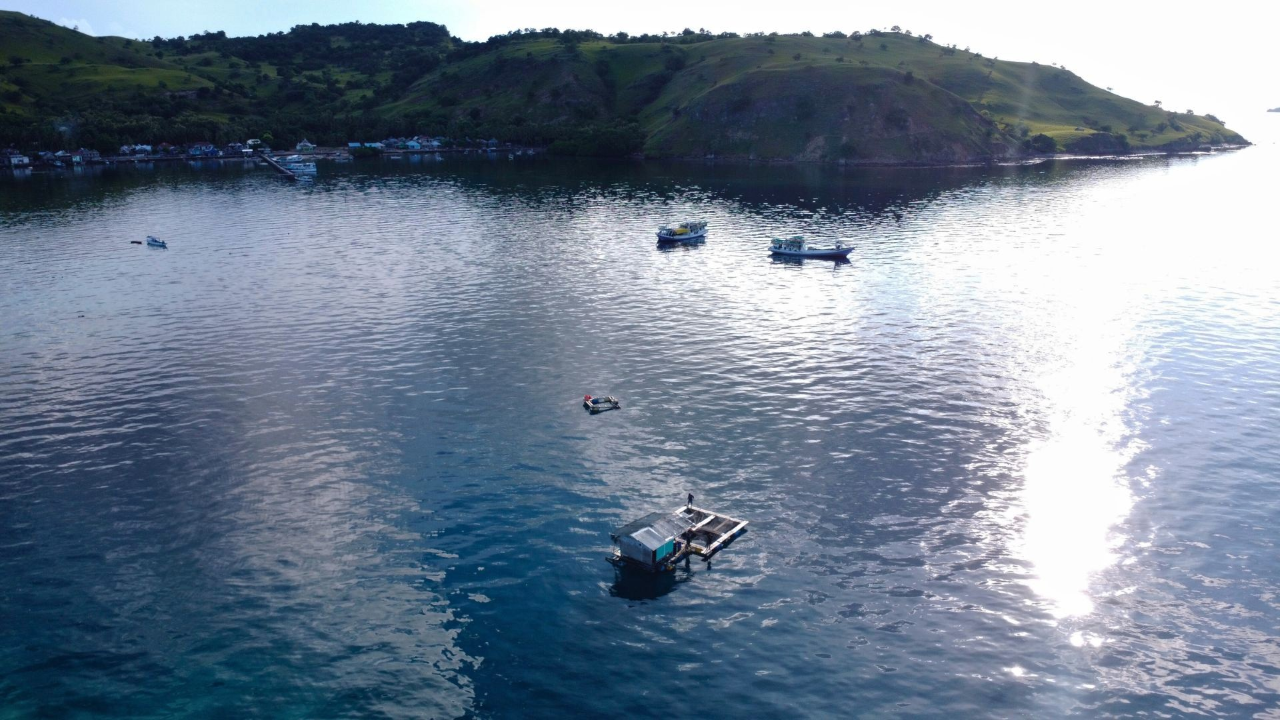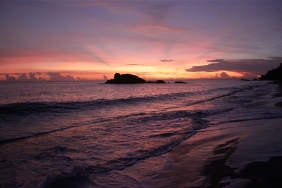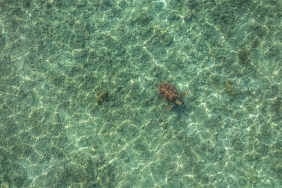SERAYA MARANNU: FROM SEA WOUND TO BLUE HOPE
Hidden at the eastern end of Labuan Bajo stands a small village called Seraya Marannu. Surrounded by blue seas and clusters of once-injured coral reefs, the village is now treading a new path to become an Other Effective Area-based Conservation Measures (OECM) area, focusing on sustainable fisheries. Who would have thought that the potential of the OECM area, which consists of 94% fishermen, was born from a dark past due to irresponsible or destructive fishing.
Some years ago, the waters around Seraya Marannu witnessed the practice of destructive fishing or fishing with techniques that destroy the habitat. Fish bombs and potassium were widely used by some fishermen for instant catches. Without realizing it, these methods are slowly destroying the marine ecosystems that support the lives of the islanders. Coral reef ecosystems were damaged, many fish species disappeared, and life at sea became increasingly difficult. When catches dropped dramatically and the sea no longer yielded the results it once did, awareness grew from within the community itself.
"Seraya Marannu used to be famous for fish bombers until the 2000s, and the capture of shark species. But now, the fishermen here have understood which one is destructive and which one is protecting the sea. Finally, together the fishermen have risen, the yield has also been good, and the price has also been good," said Hajj Abdulrahman, Chairman of the BPD, Seraya Merannu Village.
According to the stories of elderly residents or community leaders, about one to two years after the practice of bomb fishing was introduced, they found it extremely difficult to get fish in the surrounding waters. This condition became a turning point that awakened the community. From then on, they agreed to stop the destructive practice completely, and it became a commitment that they still hold fast to this day.

With assistance from the WWF Indonesia Foundation, the Seraya Marannu community is now embarking on a new chapter in their journey. Not just restoring the damaged ecosystem, but also reorganizing the way they interact with the sea. Educational programs, training for fishermen, certification, and the implementation of environmentally friendly fisheries practices are important foundations in the transformation of Seraya Marannu village towards a more sustainable future.
Fishermen are now starting to apply various sustainable fisheries principles, such as the use of selective fishing gear, the implementation of no-take zones, and respect for fish spawning seasons. Uniquely, the Seraya Marannu community only uses fishing rods as their main fishing gear - unlike many other coastal villages that rely on nets, arrows, or various other fishing gear. Even with simpler equipment, the community is still able to obtain a good and sufficient catch.
According to Mr. Sutirman, Head of Seraya Marannu Village, the type of fish caught by fishermen is highly dependent on the season. Fishermen adjust their fishing techniques and locations based on these seasons but generally continue to operate around the village. Catches vary, ranging from reef fish such as ketamba, grouper, to tuna and tuna. The average catch ranges from 250 to 500 kilograms per month, but can jump to 3-4 tons in one month during the abundant fish season, especially when the weather is favorable. On some days, a fisherman can even weigh up to 150-200 kilograms of fish per day. However, in lean seasons such as January or February, income can drop drastically or even be nil due to unfavorable weather conditions.
The results are good news for a region that is in the process of recovery. Although coral reef damage from fish bombing is still visible, with recovery rates only around 20-30% in some locations, Seraya Marannu still holds great potential. The area is surrounded by rich seas that are important to preserve.
"Seraya Marannu has a number of key criteria. Firstly, it is outside of a formal government-managed conservation area, specifically outside of Komodo National Park, in line with the Ministry of Marine Affairs and Fisheries' definition of OECM. Second, the village has embarked on an institutional and governance initiative with WWF-Indonesia, the village government, and local and provincial partners in NTT in 2024 to support community-based conservation efforts. Third, Seraya Marannu has important biodiversity for the local community, especially the seagrass and mangrove ecosystems that surround the island. In addition, the area also has healthy coral reefs with high potential," explains Kusnanto from WWF Indonesia. The combination of these three essential ecosystems makes Seraya Marannu an area with great potential to be recognized as an OECM in Indonesia.
The transformation of Seraya Marannu sends a strong message that change does not always have to come from outside. Instead, when local communities are at the center of change, supported by knowledge, mentoring, and space for empowerment, the sea can recover and remain life-giving. Today, Seraya Merannu is not just a fishing village. It is a symbol of hope that the sea can heal, and that the community can be its best guardians.
With a spirit of mutual cooperation and a commitment to sustainable fisheries practices, the people of Seraya Marannu are moving forward. They know that protecting the ocean is not just about today, but about the future of their children and grandchildren.





